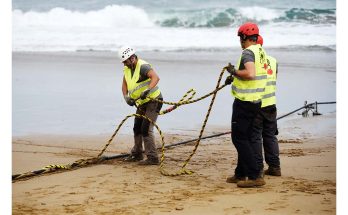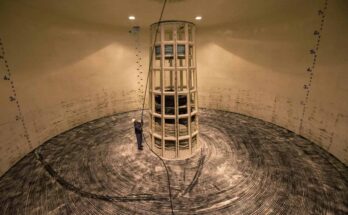“How the Internet Travels Across Oceans”
The New York Times, March 19, 2019
Technology
By Adam Satariano. Graphics by Karl Russell, Troy Griggs and Blacki Migliozzi. Photographs by Chang W. Lee.
The internet consists of tiny bits of code that move around the world, traveling along wires as thin as a strand of hair strung across the ocean floor. The data zips from New York to Sydney, from Hong Kong to London, in the time it takes you to read this word.
Nearly 750,000 miles of cable already connect the continents to support our insatiable demand for communication and entertainment. Companies have typically pooled their resources to collaborate on undersea cable projects, like a freeway for them all to share.
But now Google is going its own way, in a first-of-its-kind project connecting the United States to Chile, home to the company’s largest data center in Latin America.
“People think that data is in the cloud, but it’s not,” said Jayne Stowell, who oversees construction of Google’s undersea cable projects. “It’s in the ocean.”
Getting it there is an exacting and time-intensive process. A 456-foot ship named Durable will eventually deliver the cable to sea. But first, the cable is assembled inside a sprawling factory a few hundred yards away, in Newington, N.H. The factory, owned by the company SubCom, is filled with specialized machinery used to maintain tension in the wire and encase it in protective skin.
The cables begin as a cluster of strands of tiny threads of glass fibers. Lasers propel data down the threads at nearly the speed of light, using fiber-optic technology. After reaching land and connecting with an existing network, the data needed to read an email or open a web page makes its way onto a person’s device.
While most of us now largely experience the internet through Wi-Fi and phone data plans, those systems eventually link up with physical cables that swiftly carry the information across continents or across oceans.
In the manufacturing process, the cables move through high-speed mills the size of jet engines, wrapping the wire in a copper casing that carries electricity across the line to keep the data moving. Depending on where the cable will be located, plastic, steel and tar are added later to help it withstand unpredictable ocean environments. When finished, the cables will end up the size of a thick garden hose.






